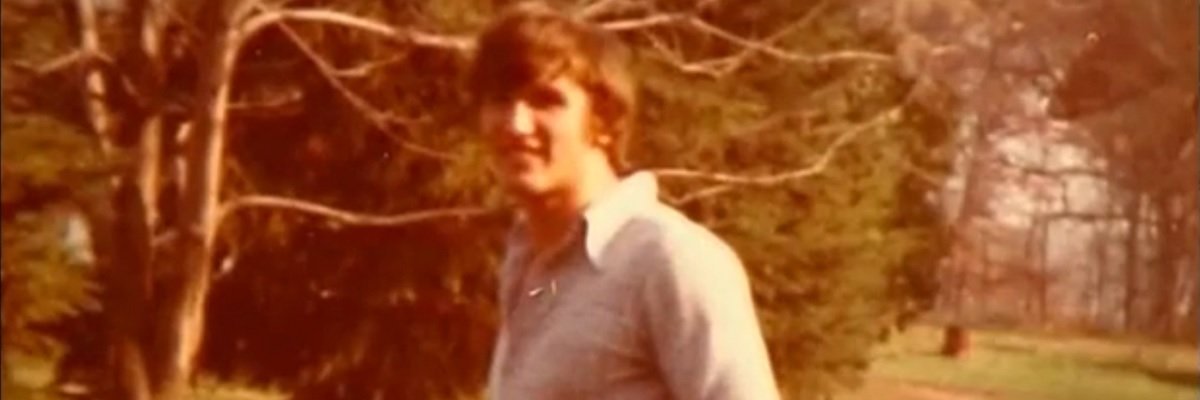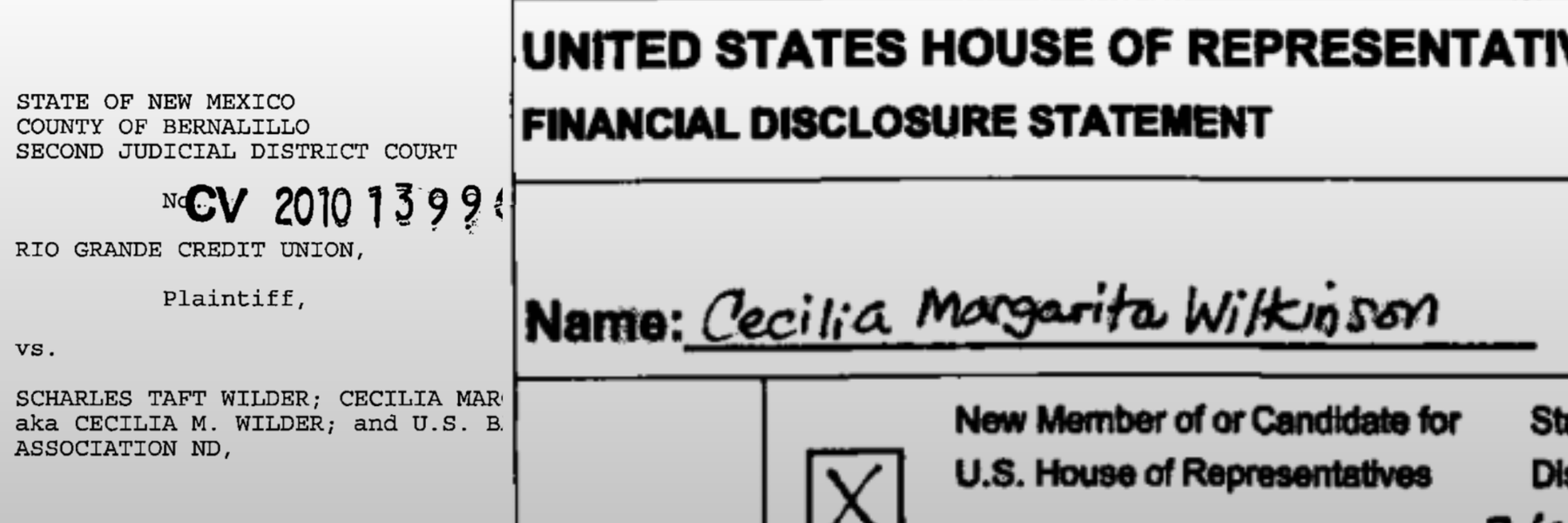Read Part One here
According to Kourdakov’s Federal Bureau of Investigation file, the Bureau was contacted about his death by a detective from the local county sheriff’s office almost immediately. The detective reported that Kourdakov had “apparently shot himself accidentally.”

The same memo reported that Kourdakov had loaded four out of five chambers in the revolver, and incorrectly assured Ann that it was safe with the hammer resting over the empty chamber.

After having some drinks with his underage fiancee, Ann Johnson, on New Year’s Eve, Kourdakov returned to their motel room with her. According to the FBI file, he then put the gun to his head, and pulled the trigger while smiling.
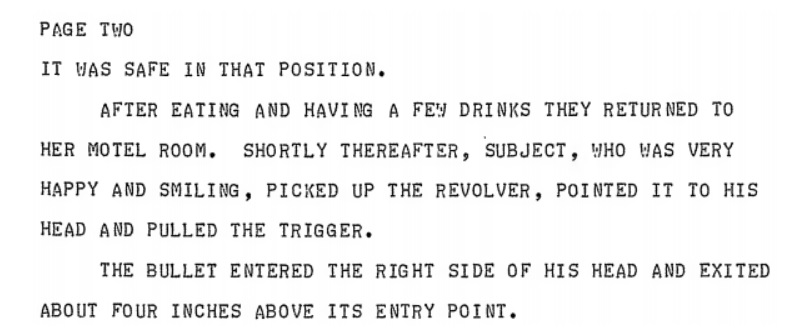
According to the version of events offered by Johnson in her testimony, Kourdakov was smiling and pointing the gun at the ceiling when she turned to look at the television. At that moment, she testified, the fatal shot rang out. This is, of course, impossible to reconcile with the version of events described in the FBI file. Johnson also testified that, the night prior, he had gotten into an argument with several men. Several outlets would indicate that they spoke Russian or Ukrainian.
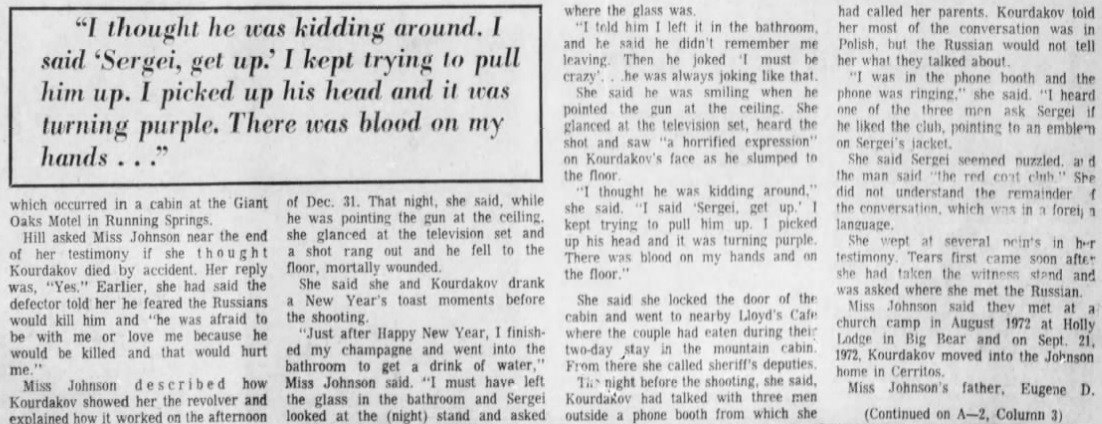
Contradicting the testimony of the other parties, Woodrow Young, who was the the director of general services for Underground Evangelism, testified that Ann’s entire family had been in the motel with her at the time of Kourdakov’s death.
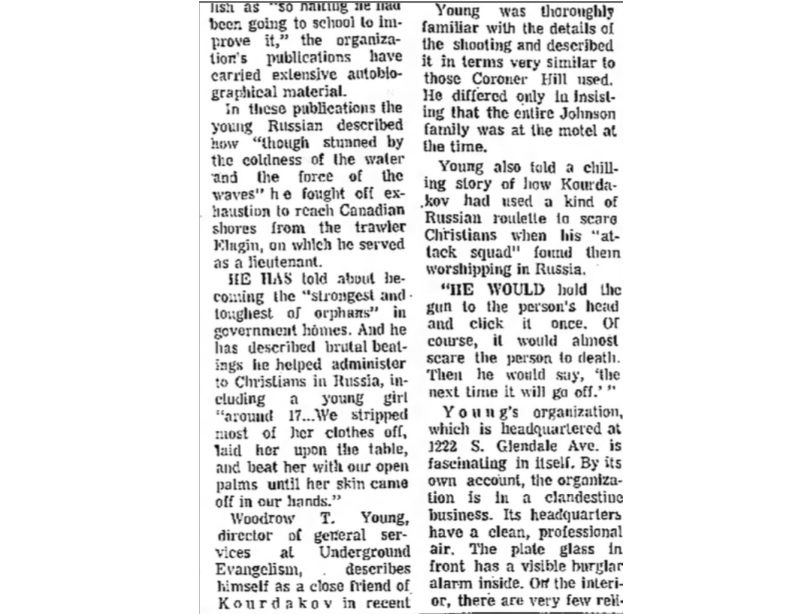
According to Johnson’s father, she called him almost immediately after the shooting and asked him to come up, to which he agreed. He also testified that he instructed her to call the police and an ambulance.
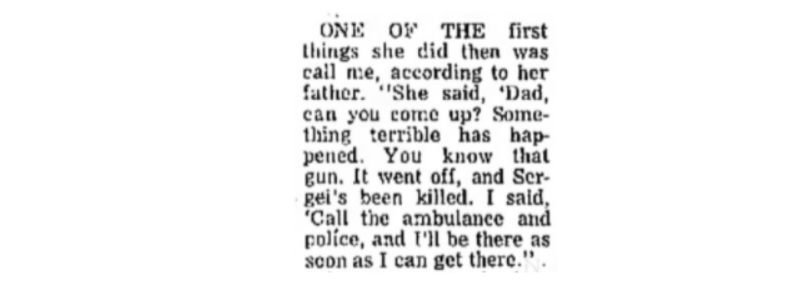
According to another version of events, Johnson wasn’t in the room at all when Kourdakov was shot. The FBI file notes that two members of the Burns Detective Agency, who had been hired by the head of Underground Evangelism, told the San Bernadino Sheriff’s Office that they had heard a tape recording made at the Evangelism Center in which Johnson “said that she was not in the room at the time subject shot himself.” When they inquired with Underground Evangelism about the tapes, they were told that “they knew nothing about the existence of such a tape.” As it turned out, however, there were about sixteen hours of these tapes recorded with Johnson over three different sessions.

When it came time for Joe Bass, the head of Underground Evangelism, to turn over the tapes to the coroner’s office (which was responsible for the inquiry), the inquiry was postponed.

Bass did turn over at least some of the tapes eventually, which the coroner would describe as “a lot of interrogation of a 17-year-old girl.” Bass denied that there was an interrogation, calling it a “roundtable.” In testimony, one of the private investigators appeared to contradict the report in the FBI file. Rather than having heard the tapes themselves, the private investigators said that they had been given “the impression” by Bass that Johnson had said this on the tapes. Bass and an attorney for Underground Evangelism both denied this.
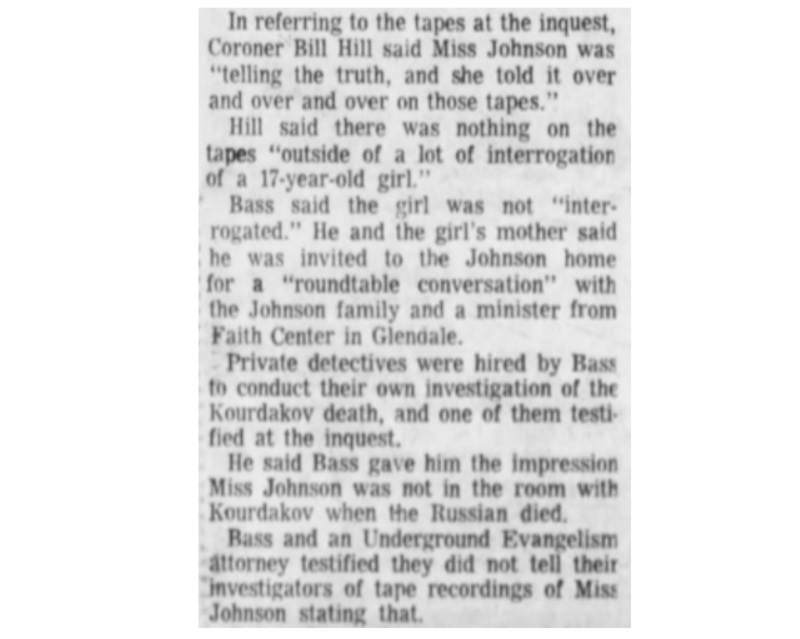
Based on statements thus far, four contradictory versions of events have emerged:
- Johnson was alone in the room with Kourdakov and looking at him when he put the gun to his head, smiled, and pulled the trigger.
- Johnson was alone in the room with Kourdakov and looking at the TV when there was a gunshot, moments after he’d been pointing the gun at the ceiling.
- Johnson was in the room with Kourdakov and her entire family when he was shot.
- Johnson wasn’t in the room at all when Kourdakov was shot.
While she would later testify that Kourdakov had spontaneously pulled the gun from under the mattress and begun playing with it, this too would be contradicted by her own statements.
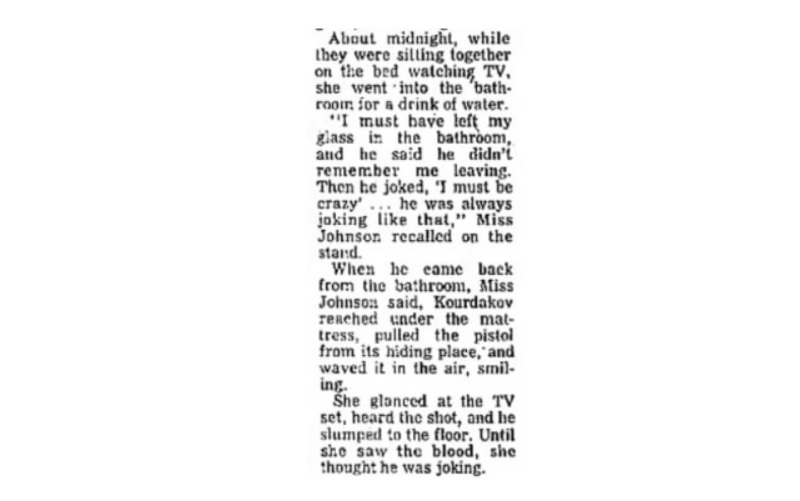
According to a newspaper clipping in Kourdakov’s FBI file, Johnson had initially provided a different version of events to the detectives from the sheriff’s office. In this version, Kourdakov had returned to the room and at her urging, “checked to be sure the revolver was where he had left it.” Kourdakov then pulled the gun from a drawer, not the mattress. He then allegedly said he understood guns (with the FBI and the Bureau of Alcohol, Tobacco, and Firearm arguing separately that he would be unfamiliar with revolvers), gestured with the gun (supposedly gesturing to his head) and said “see” while pulling the trigger. This contradicts not only her later testimony, but the information in the FBI’s report previously excerpted.
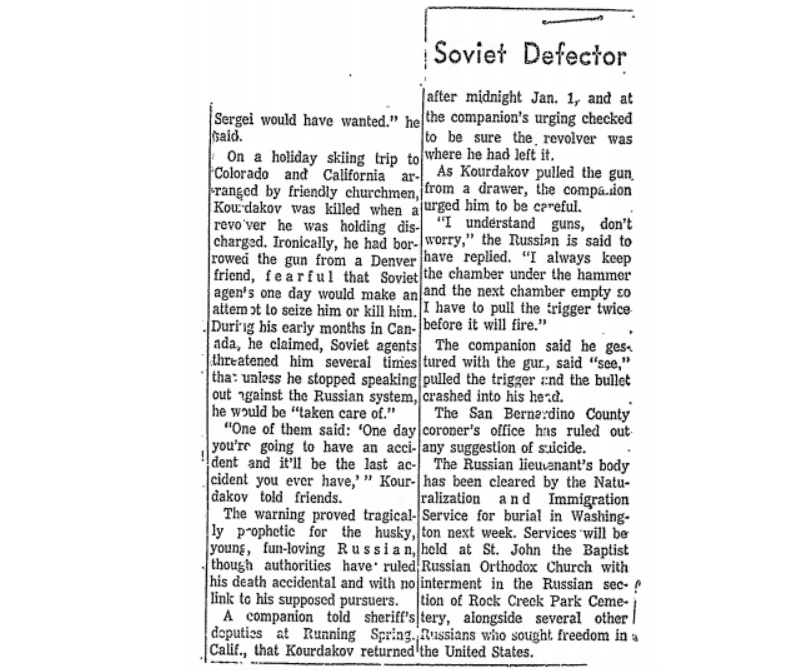
While some early reports described the death as a possible suicide, this was soon ruled out. No doubt that one reason it was ruled out, aside from the inconsistent testimony of Johnson, was that many who knew him described him as having been in high spirits and there being no known motive for a sudden decision to commit suicide.
Another version of the story would emerge - which seemed to support the notion of suicide - or at least that he knew he was going to die.


This appears to have followed a mysterious conversation Kourdakov had with three foreigners.
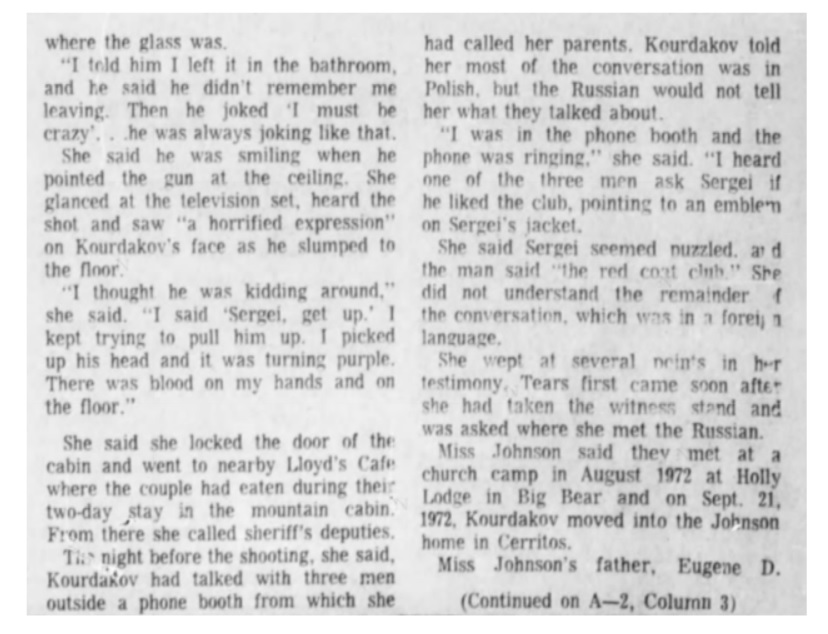
According to the FBI memo which appears to contain a redacted reference to the Central Intelligence Agency (previously described), all of the employees doubted the suicide story, with a few also being “somewhat reluctant to believe the escape from communism story.”

Another memo describing information gathered on the same day appears to confirm that it was CIA that the Bureau spoke to, referencing “SE” in Washington D.C. SE was the abbreviation for the Agency’s Soviet-East European Division.

This memo goes on to mention that some members of the emigre community also doubted Kourdakov’s bona fides, but nearly all were “very disturbed” by news that the Soviets had a claim to Kourdakov’s body. This issue was eventually settled, however, and Kourdakov buried in the United States.

At least one of those who FBI spoke to that day appears to have been an intelligence officer, however: George Prujan. While the FBI file identifies Prujan as a “former Cossack Cavalry Officer in service of the Czar,” and a respected member of the emigre community, he was identified as a member of the Association of Former Intelligence Officers in their newsletter, prior to his death in or just before 1986. Prujan’s comments confirm Kourdakov’s visit to D.C. in the time period he claimed to have met with CIA employees prior to his death.
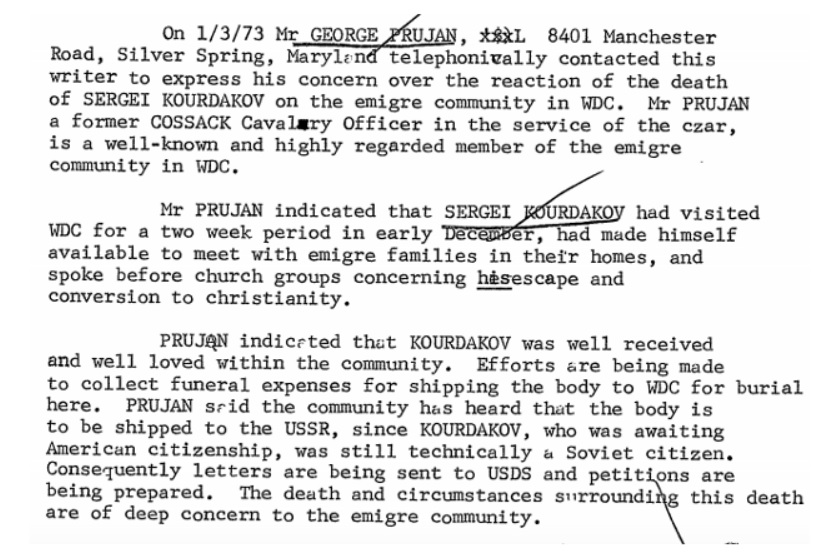
While they do not reveal any details of the debriefings or meetings, newspaper reports from the weeks after Kourdakov’s death appear to confirm not only CIA’s interest, but that of several other intelligence agencies which debriefed him at one point or another.
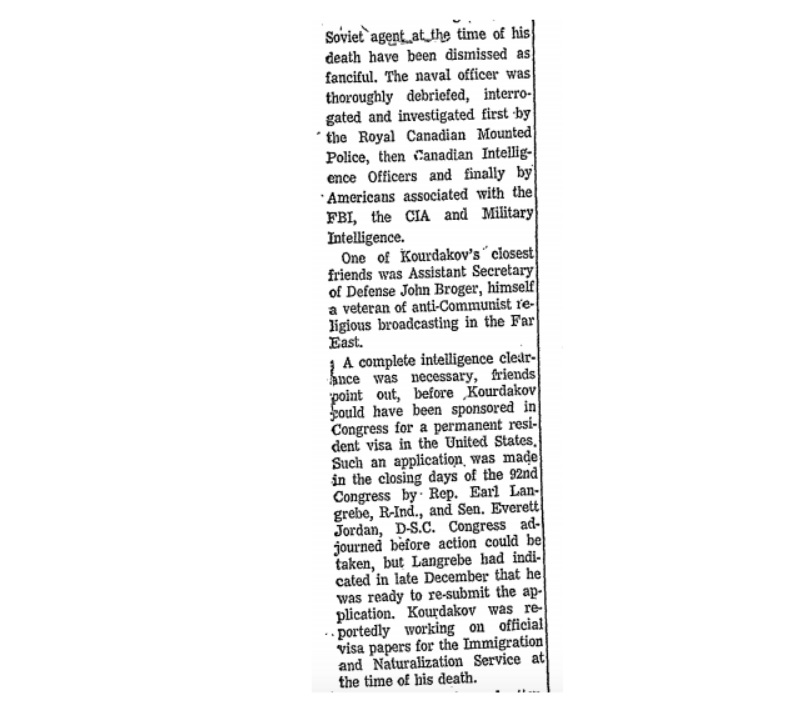
Due to Congress’ interest in Kourdakov, which included planned testimony about a month after his alleged accidental suicide, and their desire to sponsor legislation to grant Kourdakov permanent residency, the Senate soon became involved in the investigation. Senate investigators and the coroner would seem to take the lead in the investigation, with the FBI seeming to refuse to investigate or share information.
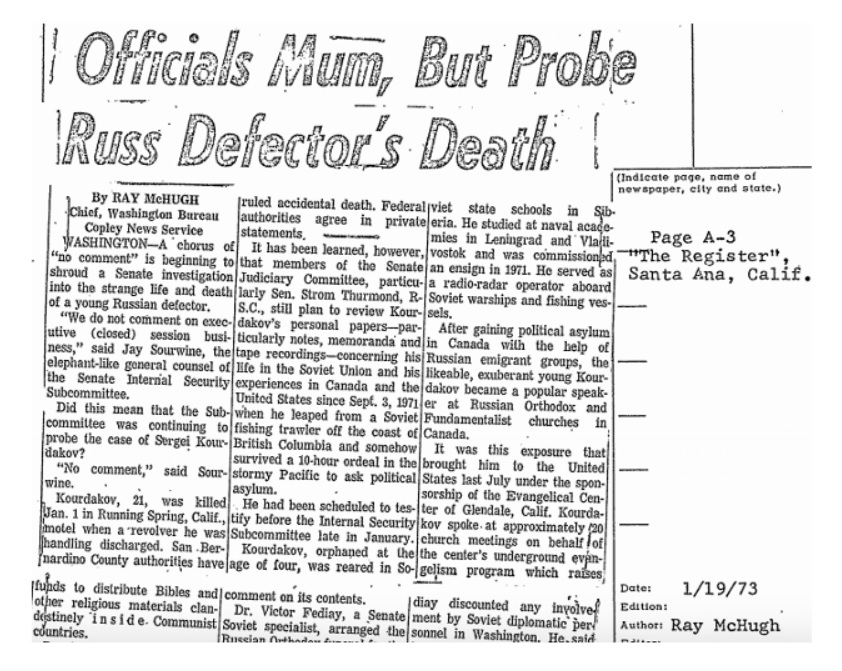
The FBI’s Los Angeles office recommended that the Bureau needed to contact John Broger for information, including to verify the existence of threats against Kourdakov (some of which Kourdakov had reported to the Bureau months before his death). Broger, however, “wanted to forget the whole matter.”
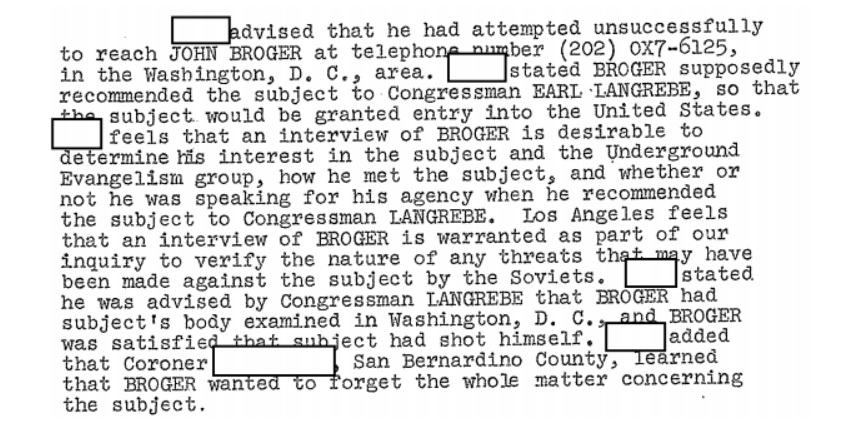
In other instances, Kourdakov reported more specific threats, which it appears the Bureau failed to follow-up on.
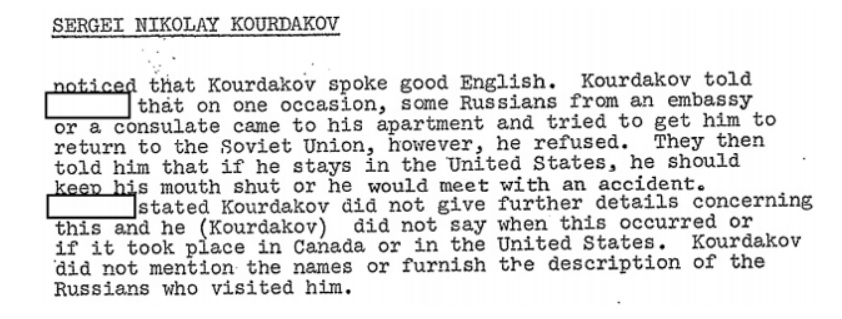
As the FBI noted, even Russian newspapers reported threats against Kourdakov, going so far as to question “whether he had shot by someone under the direction of the Soviets.”
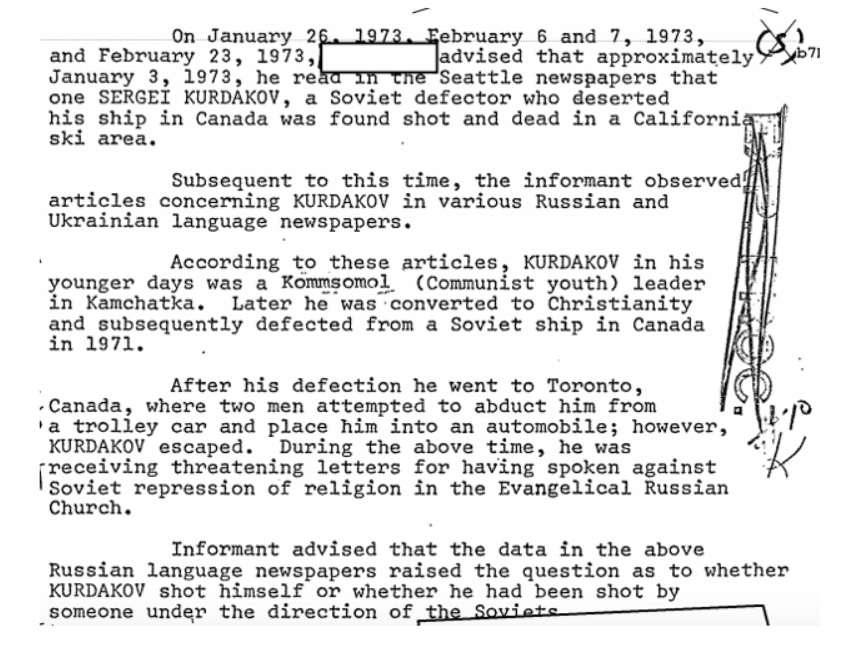
However, the Acting Director of the FBI, L. Patrick Gray, instructed the Bureau’s Los Angeles Field Office not to interview Broger.

The coroner also requested that someone from the FBI come and testify at the inquest, including to address the issue of threats against Kourdakov, such as those he had personally reported to the Bureau.

The Bureau’s Acting Director, however, also instructed the LA Field Office to inform the coroner that they would not comply with the request to send an someone to testify. The memo specifically instructed the LA Field Office not to inform the coroner that Kourdakov had reported threats to the Bureau in the interview in which the coroner was requesting information on that very subject.

As part of the inquest, it was also requested that the Bureau contact the Royal Canadian Mounted Police liaison about Kourdakov and his time in and debriefings in Canada.

Although several memos described the Bureau’s interest in the papers Kourdakov had at the time of his death and the manuscript he was working on at the time, they never examined the papers. Instead, Senate Investigators did, and the Bureau received secondhand reports that the papers contained no security information.

Another memo stated that the Bureau would get a copy of the manuscript …
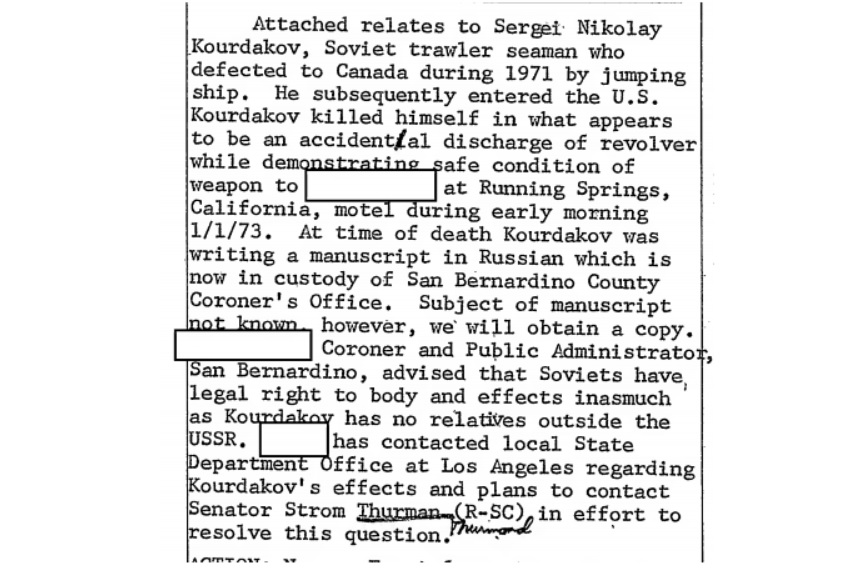
however, this was not to be. A later memo eventually instructed the Bureau not to make an inquiries on the matter.

After a number of memos stating that the papers would be forwarded to FBI HQ by the LA Field Office when they became available, a final memo was issued thirteen months after Kourdakov’s death, stating that as it was taking too long and the Bureau had been told that the papers had no intelligence or security value, they would not examine them or even continue to attempt to obtain them for the intelligence agency with jurisdiction over the issue.
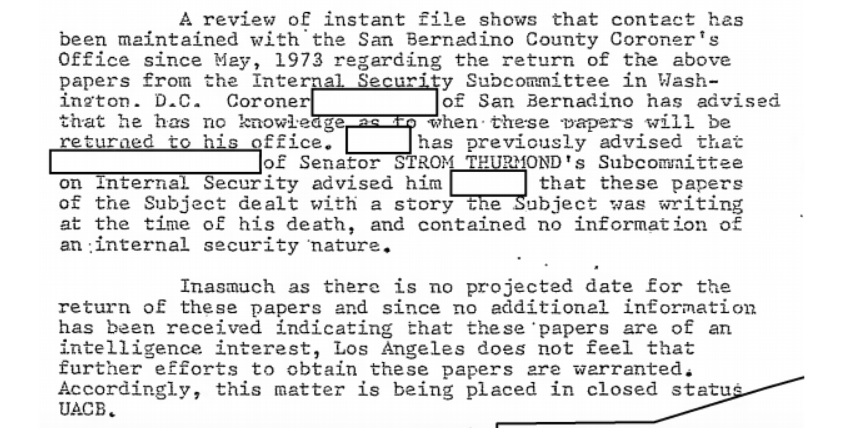
While the Bureau refused to investigate the matter, or to cooperate with those who were investigating the matter, other aspects of the case came under closer scrutiny: specifically, the sexual history of Kourdakov’s underage fiancee. At the request of Underground Evangelism’s leadership, she was not only questioned about whether or not she had intercourse with Kourdakov, she was polygraphed and examined by two doctors “to determine if she was a virgin.”
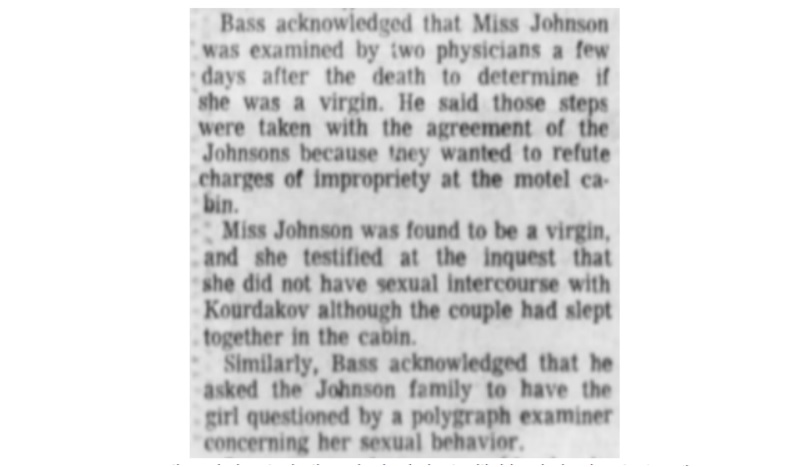
She was later questioned about whether she had slept with him during her testimony at the inquest.

No attention seems to have been paid to the issue of her underage drinking, nor was the issue handled discretely or with the intention of ensuring that a possible victim of statutory rape was provided with necessary counseling, but rather to ensure that there was no embarrassment for Underground Evangelical.
Although officially ruled an accident, the question of Kourdakov’s death continues to linger, in no small part due to the Bureau’s declination to investigate the matter and refusal to cooperate with those who were. This, on top of the unresolved numerous contradictions in the narrative of his death and the strange synchronicities surrounding it.
Was Kourdakov alone when he was shot? Was his fiancee with him? If she was, was she looking at him, or the television? Was her family there? Was it suicide, an accident, or the world’s worst game of Russian roulette? Was his death prompted by his mysterious conversation with foreigners just before he allegedly told someone he wouldn’t be living long? Did he point the gun at his head, or the ceiling? Did he get it out at his own initiative, or his fiancee’s? Was it in a drawer, or under the mattress? Did he get it from her father in Cerritos, California or from a friend in Denver, Colorado? Was it a CIA employee’s idea that he illegally acquire and carry a gun? How did he become so misinformed about how revolvers work? What was he writing at the time of his death? If his death was orchestrated by someone, did it have anything to do with the Congressional testimony he was to give in late January? Why did the Acting Director of the FBI instruct the Bureau to neither inquire about the case, nor to share information? Why did CIA reclassify his name as a source and method? Was Kourdakov a bona fide defector? Was the bible smuggling Underground Evangelism affiliated with the CIA, or did they just have ties to the Pentagon, Congress, and other “unofficial friends” in D.C.? Were there additional ties between the group and former CIA projects? What did Johnson really say on the tapes, and did the private investigators hear them?
It’s unlikely there will ever be satisfactory answers to all of these questions, and there is no way to reconcile the many contradictions in the testimony and statements offered by different parties at different times. If the Bureau had investigated the matter, or at least cooperated with those who did, there might be more answers to be uncovered. Unfortunately, the Bureau didn’t and as a result, our understanding of history suffers and we’re left not with answers, but with questions and innuendo that could be used to implicate anyone from random chance to the CIA to communists.
A handful of answers and clarification might yet be found in the FBI file if the appeal is granted, and if the Bureau hasn’t destroyed the file. Until the Department of Justice responds to the appeal you can read the majority of the preprocessed file below, or the rest on the request page.
Like Emma Best’s work? Support her on Patreon.
Image by Forgive Me, Sergei, via YouTube
